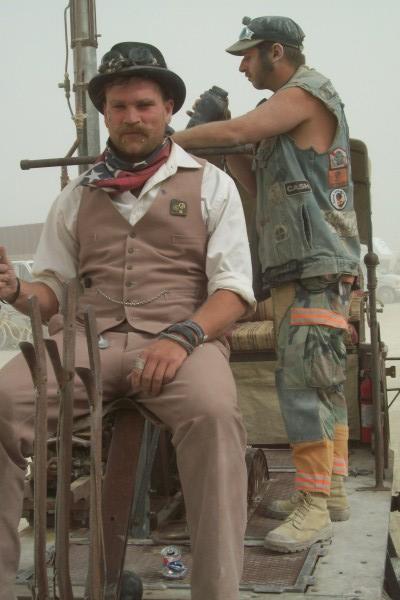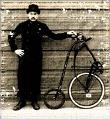In the four months he's been there, Doobie's only seen four guests go out on the job with the workers. You can earn your dinner that way, you see. It's very encouraged, and normally they could use the extra hands. But most guests are parents and they just spend the day checking out quaint local sights, like the llama farm/B&B or the UFO Sanctuary, which apparently consisted of a bunch of folding chairs where people gather and drink and tape the sky, and a big pyramid-shaped addition to the owner's house where the video tapes are available to view and see for yourself. Of the four guests who had gone working, two were my sister and I and the third was my brother's other friend who came up the week before. Doobie was definitely the most outdoorsy of the bunch- the others were granola-types, and he's more of a jerky-type, if I can mangle that metaphor. He likes huntin' and fishin', not just hikin' and campin'. He was the head firestarter, which tickled me, to think of how the ability to get a good fire going doesn't come into play much in my regular circle of friends.
We drove east, past the Sleeping Beauty, a mountain shaped like a sleeping woman. We came to a town that managed to be even smaller than Trout Lake. We waited at a gas station/general store/hunting lodge, staffed by the only Indian I saw up there, presumably a Klickitat. The town dog came over and played fetch with us. Soon we were joined by a Sponsor, an employee of the forest service who was along in case there was any chain-sawing to be done.
As we drove east, the countryside became less like a rainforest and more like a desert. The trees became Sarasotas and White Oaks, and the underbrush became more scraggly. We left the road at a locked gate that indicated this was Champion International’s land, and we drove on an old logging road along the river in that picture below until we came to Dead Horse Canyon. I had a funny feeling about this valley, sitting there for a hundred years waiting to be logged again. I had worked at Champion Paper to put myself through college, and saw the trainloads of pulp unloading at the front end of the mill, and here I was at the headwaters of not only that process but the entire paper trail itself.
My work life revolved around paper for a long time… I worked in the mill, at a recycling plant, and five years in the xerography mines. I made it, used it, and processed it once it was used. When I entered college the big-ticket major was Paper Science, but I’d already seen exactly what those majors do for the rest of their life- working in the paper mill was plenty of inspiration, but only to educate myself to where I wouldn’t have to work in the paper mill any more.
Out of college my first job was the Relay, a contractor of the State of Ohio that required a certain amount of anonymity. They built the office in a storage unit on the lot of a Federal Document Repository, which were basically other storage units with armed guards. The sort of place that the Ark of the Covenant is sitting in if you believe what you see in Indiana Jones movies. That was the final stop on the paper train, there or the landfill. So I’ve pretty much followed paper its whole life now. Some civil engineer with a sense of humor had named the road to the repository “Paper Trail”.
Back at the head of the paper trail, we tromped about a half mile into a gulley that was about a half mile wide. A creek led into the river here, and they had put up a barbed-wire fence to keep out all the free-range cattle that were wandering around those parts. Cattle eat everything down to nubs and they also introduce a lot of nutrients into an ecosystem. I think I stepped in a lot of nutrients that day.
The old fence was all washed out and covered in fallen trees. We thought we would have to replace it but the forest ranger radioed in and somebody told him that a new fence had been built, up the creek a bit along an old log-train track bed. So we hiked up there and found it. We spent the morning walking that fence, tightening it up now and then. For those of you who’ve never had the pleasure, tightening a barbed-wire fence is done with this tool that looks like a pair of pliers with a hammer claw sticking out one side. You grab a barb and use that claw like a lever to tighten the wire, and then you either hammer a staple over it (wooden posts) or clamp the staple around the stake (metal posts). Meanwhile the ranger walked the old fence and chainsawed any fallen trees off of it. The first time he started that thing up a flock of turkeys took off right by Doobie. Those turkeys were everywhere, I’ll bet we saw thirty that day. Grant and Doobie said the thing to do is chase ‘em around, as they’ll run a bit before they reluctantly take off. A turkey is not nature’s most maneuverable flier. It being winter, most birds were gone south, but we also saw stellar jays (a beautiful bird) and bald eagles cruising the river for salmon.
We had lunch by the river, watching an American Dipper do the same thing.
 The Steampunk World
The Steampunk World


0 Comments:
Post a Comment
<< Home